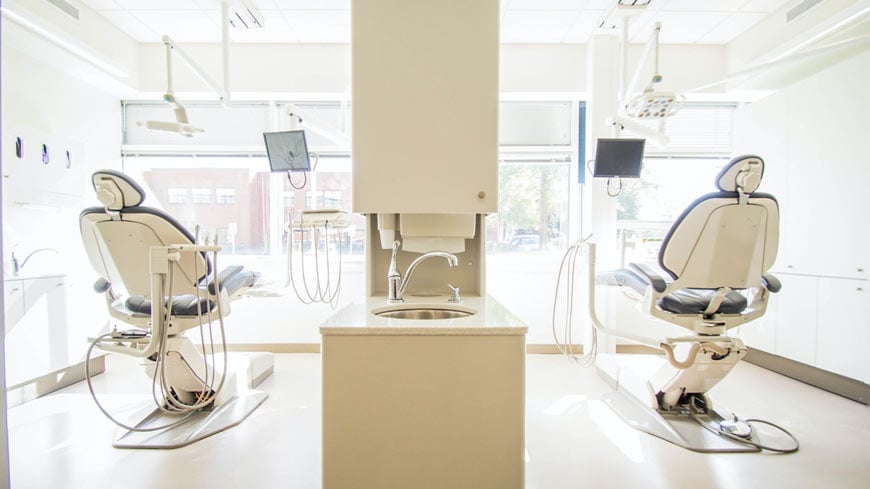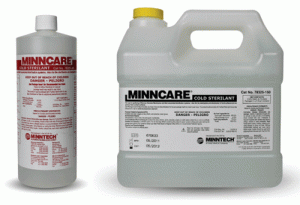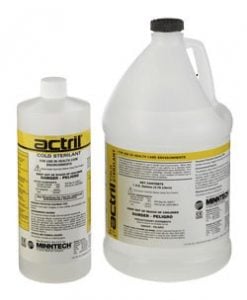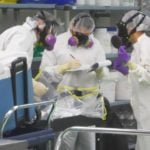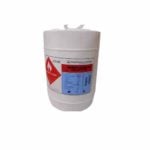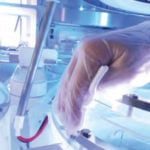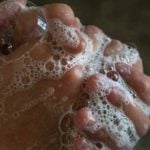Table of Contents
A blog.gotopac.com reader asked, “Can I safely use 91 or 71% alcohol to clean dental water drain lines? The water company is saying not to use bleach or foaming cleaning. They recommend Purevac-which is known to be expensive.”
It is difficult to give general advice on water and drain treatment. The approach is determined by the type of water system and types of biological burdens.
What are the best decontamination methods for general water lines, dental drain lines, and general water systems? You’ll also find information about the effects of cleaners and disinfectants like bleach, isopropyl alcohol, and peracetic acid within drain water systems.
Let’s dig deeper into the question of why water companies don’t recommend bleach, nor alcohol, for drain water line cleaning.
Is Isopropyl Alcohol Safe for Drains?
First, let’s consider some basic observations about isopropyl alcohol and extrapolate
A) Isopropyl alcohol is considered a hazardous substance
B) Isopropyl alcohol is blended with denaturants which render them undrinkable. (Unless you purchase high-purity forms such as absolute alcohol). Likewise, the isopropyl manufacturing process is known to produce byproducts like xylene, benzene, acetone, heptane, and ethanol.
C) Extractions, industrial processes, and blending mixing of other materials and substances may produce what is considered “mixed hazardous waste”. Avoid dispersal of spilled material and runoff and contact with soil, waterways, drains and sewers.
D) Isopropyl alcohol is combustible. Vapors may accumulate in low or confined areas or travel a considerable distance to a source of ignition and flashback. Runoff to sewer may create fire or explosion hazard.
Why Is Isopropyl Alcohol Not Great for Cleaning Drains or Water Lines?
- Cost
- Sensitive to dilution
- Flammable / Combustible
- Not a strong oxidizer of biofilms
- Not effective against bacterial spores
- Subject to flammable storage requirements
- Reactive with aluminum
Water concentration is empirically essential for isopropyl alcohol efficacy, either as 70% mix for disinfection, or 90%+ for various solvent, cleaning, and decreasing processes. Effective alcohol use is normally associated with a ratio of either 7:10 or 9:10.
A high concentration of active ingredient increases the raw cost while also requiring a higher volume supply compared to bleach (usually 50:1)
Bleach (usually 5.25% or 6.00%–6.15% sodium hypochlorite depending upon manufacturer) is usually diluted in water at 1:10 or 1:100. (3M). The advantage of bleach is that it’s easily diluted in water
Alcohols lack sporicidal action, cannot inactivate hydrophilic viruses (poliovirus, coxsackie virus), and cannot penetrate protein-rich materials.
Why Don’t Water Companies Recommend Bleach for Water System Disinfection?
While chlorine is often recommended and deployed as a disinfectant when diluted with water, the effects of chemical agents on downstream watersheds, ecosystems, and drinking water have been little studied up until recent decades.
Studies from the mid-’90s suggested that chlorinated water used to reduce infectious diseases may account for most of the cancer risk associated with drinking water.
Drinking Water and Cancer – Environ Health Perspect. 1995 Nov; 103(Suppl 8): 225–231.
Can You Pour Bleach Down the Drain?
Is it safe to pour bleach down a drain? Opinions on the subject are mixed and largely evaluated based on reasonable alternatives, target activity, and dilution factors.
Roll of DBPs in Water System Contamination
Strong oxidizing agents like bleach will reduce pathogenic microbes, but also create disinfection by-products called DBPs. The interaction of DBPs and other downstream chemicals within water systems can adversely affect humans and animals.
The primary method of chlorine-based exposure is believed to be through ingestion, but also through swimming pools and showers. Studies link dermal DBP absorption (through the skin) of chlorinated water to an increased risk of bladder cancer.
Chlorinated water gives rise to the proliferation of trihalomethanes (THMs). THMs are considered environmental pollutants, many of them considered carcinogenic.
The Negative Effects of Bleach for Drains
THMs in drinking water led to research on other chemicals formed when chlorine is added to water, and to the health effects of these chemicals.
Richardson 5 identified greater than 600 water disinfection by-products in chlorinated tap water, including haloacetic acids (HAAs). THMs, and to a lesser extent HAAs, are currently used as indicator chemicals for all potentially harmful compounds formed by the addition of chlorine to water. In many countries, the levels of THMs and HAAs in chlorinated water supplies are regulated based on this assumption.
Humans are exposed to DBPs through drinking-water and oral, dermal, and inhalational contact with chlorinated water 6. In populations who take hot showers or baths, inhalation and dermal absorption in the shower accounts for more exposure to THMs than drinking water 7.
Impact of Biofilms on Water Systems
High-level water system disinfectants are designed to address the challenges of frequent discharge into sewer systems.
Biofilms are difficult to penetrate with general soaps, detergents, and general-purpose sanitizers.
Biofilm formations have adverse impacts on controlled environments, food and beverage, hemodialysis systems, municipal water, medical device reprocessing, agriculture, hydrotherapy equipment, and many other industries.
Novel disinfectant formulations allow more powerful oxidization of biofilms while also mitigating cost, environmental harms, and workplace hazards.
Biocides also eventually wash down the drain to water treatment facilities, where they may not be readily degraded and are ultimately discharged to surface waters, where they could impact biodiversity in natural areas and trigger significant environmental problems.
None of these potential problems with biocide use are well studied.
Exposure to antibiotics and other antimicrobial products, whether in the human body, in animals, or the environment, applies selective pressure that encourages resistance to emerge favoring both “naturally resistant” strains, and strains which have “acquired resistance”.
Source: Antibiotic Resistance: An Ecological Perspective on an Old Problem
Adverse Effects of Antibacterial Agents in Septic Tanks
Drain cleaners, paint, solvents, and even antibacterial soaps can adversely affect septic tank systems.
According to Networx, “These chemicals kill the essential waste-eating bacteria in the septic tank … and you can guess the result. Also, items 7 and 8, below, should serve as a double-warning for septic users.”
Dental Drain Water Line Contamination
Dental-based water systems require aggressive oxidizers to prevent biofilm buildups. Biofilms are known to harbor antibiotic-resistant microbes and gram-negative bacteria.
“It has been known for more than 30 years that water delivered by dental units during routine dental practice is highly contaminated by numerous species of pathogen and non-pathogen microorganisms which enter dental units retracted up from the oral cavity of patients undergoing dental treatment or delivered by incoming municipal water, the so called heterotrophic bacteria [1-3].”
BMC Oral Health. 2002
Contrasting Water Contamination and the Use of Disinfectants in Water Systems
Some chemicals and products should never be poured down the drain. The EPA regulates which chemicals are drain-safe but does not oversee the standards of private water wells. States or municipalities may also create their own criteria.
EPA Requirements for Water System Chemicals
It is, therefore, necessary that a disinfectant meets the requirements for registration with the EPA, in addition to the state requirements, which may be more stringent, as is the case in California.(32)
Lastly, disinfectants that are disposed of down a drain (for example, as mop water or expired product) and through the sewer system to publically owned treatment works must meet appropriate disposal requirements.
The product must have a pH between 2 and 12.5, or it is considered to be corrosive hazardous waste, according to the Resource Conservation and Recovery Act. (28) Once that requirement is met, disinfectants often must meet additional, stricter regulations for disposal through publically owned treatment works that are enforced on a state or local level. For example, in the city of Los Angeles, a product that is poured down a drain must have a pH between 5.5 and 11, and dilution in water is not considered a valid means of achieving this goal. (25)
EPA Guidance on Pollution and Safer Cleaning Alternatives
Reduce Hazardous Material Sources
“Source reduction means that less hazardous material must be recycled, treated or disposed of, and thus is a good choice for the environment and human health. Businesses can reduce pollution at the source by changing their production, operation, and raw materials use. Sometimes these changes are simple and can save money.”
Practice Green Chemistry
“Another way to prevent pollution is to practice green chemistry, the design of chemical products and processes that reduce or eliminate the use or generation of hazardous substances. One of the principles of green chemistry is to avoid using solvents when possible and to use safer options when you must use these chemicals.”
EPA – 2016
Prevent Environmental Accumulation and Monitor in Real-Time
10. Design chemicals and products to degrade after use: Design chemical products to break down to innocuous substances after use so that they do not accumulate in the environment.
11. Analyze in real-time to prevent pollution: Include in-process, real-time monitoring, and control during syntheses to minimize or eliminate the formation of byproducts.
What Makes Minncare Effective for Dental Drain Water Lines?
Peracetic acid is a powerful oxidizer. When combined with hydrogen peroxide and other stabilizers, the solution is effective against even hard-to-kill bacteria found in water lines.
“Interesting results have been obtained by testing the water samples against peracetic acid delivered by the chemical solution. After 5 minutes of contact no growth of heterotrophic bacteria was found in any of 60 water samples tested. These results are in agreement with other reports showing that preformed peracetic acid possesses a very rapid and broad-spectrum microbicidal activity together with a very good activity against biofilm in waterlines used for haemodialysis [8–12]. “
BMC Oral Health. 2002
Minncare® is a less obvious solution for dental drain water decontamination. It’s a stabilized mixture of peracetic acid, hydrogen peroxide and acetic acid, which leaves no toxic residue.
Importantly, it’s easily inactivated by water and when diluted it returns to an inert form of acetic acid (essentially vinegar and water).
In laboratory settings, peroxide-based formulations showed “product was considerably safer than the other products tested and that the pH of most products was not conducive to disposal down a drain.”
Source: Factors in the Selection of Surface Disinfectants for Use in a Laboratory Animal Setting
What is Minncare? Why Is It Recommended for Dental Water Line Cleaning?
Minncare Sterilant, also referenced as Minncare® Cold Sterilant, is an effective, ready-to-use disinfectant and sterilant for critical water system cleaning.
The Minnecare formulation is a specialized sporicidal disinfectant composed of peroxyacetic acid (also known as peracetic acid or PAA), a hydrogen peroxide catalyst, and other inert ingredients. A novel chemistry creates stability in concentrated forms, yet also is a more powerful oxidizer than bleach.
There are many applications for this solution. It’s frequently used for sterilization of water systems for renal therapies, agriculture, and some other industries.
Some disinfectants are designed for use in “cold” applications, meaning applications which do not require heat, dissolves to acetic acid and water (essentially vinegar).
The benefit of Minnecare instead of bleach or alcohol for drains and water systems is the biodegradable and EPA registered green-friendly formula. It contains no aldehydes, toxic chemicals or carcinogens, and is chemically safe for almost all metals and plastics.
Minncare is diluted to 1:100. So, the active ingredient is the equivalent of a 1% concentration. One gallon treats 400 gallons of rinse water.
CDC: Guideline for Disinfection and Sterilization in Healthcare Facilities, 2008
Where to Find Specialty Help and Minncare Products
It is the responsibility of every facility to validate the use of a new chemical for various compatibility within their industry, both safety and regulatory.
Production Automation Corporation (PAC – that’s us) is a factory-direct distributor of Minncare and contacted the manufacturer to confirm acceptable Minncare use within dental drain systems.
Spent Minncare Cold Sterilant is acidic and requires normal neutralization as specified by your state and local regulations. A 1% solution of Minncare Cold Sterilant has a pH of 3.5.
Follow manufacturers’ instructions for proper use of disinfecting (or detergent) products — such as recommended use-dilution, material compatibility, storage, shelf-life, and safe use and disposal.
You’ll find a bulk supply of Minncare® on the PAC web store in case packaging. Cases (Qty: 4) include either quart, 1 gallon, and 40-gallon packaging.
Cold Sterilant Cleaning Solutions
Concentrated Sterilant for Water Systems
Prediluted Sterilant for Surfaces
Actril Cold Sterilant is designed for hard surfaces common in biopharmaceutical facilities, therefore it’s ready to use and pre-diluted. It maintains compatibility with most materials found in general and high-performance environments. The Actril formula is eco-friendly because its raw materials are not characterized as carcinogenic, mutagenic materials, or toxic. It’s safe for the environment and is completely biodegradable and will decompose into oxygen, water, and acetic acid.
Beyond its use in medical device manufacturing, it is also appropriate for poultry processing plants, canneries, dairies, breweries, wineries, including food and beverage facilities.
Related Posts
-
Ethanol & Isopropyl Alcohol: Your Questions Answered
The internet's guide to frequently asked questions about Isopropyl alcohol. Find answers to questions about IPA use, sanitizers, and dilution.
-
The Dangers of Isopropyl Alcohol
Hazards of Isopropyl Alcohol (IPA) As we’ve discussed in a previous post, there are many advantages of using isopropyl alcohol in the manufacturing process because of its low cost, but what we didn’t cover is some of…
-
We Sell The Highest Grade 99% Isopropyl Alcohol By The Gallon. Here's How To Get The Best Price Online.
For any use of isopropyl alcohol, it's essential that the advertised contents reflect the actual reality of the solution. Water to alcohol concentration is a key indicator of efficacy and usefulness of IPA. Quality solvents…
-
What is the Shelf Life of Isopropyl Alcohol (IPA)? Does it Expire?
Does Isopropyl Alcohol (IPA) expire and what is the shelf life? How do I store it?
-
Why Is 70% Isopropyl Alcohol (IPA) a Better Disinfectant than 99% Isopropanol, and What Is IPA Used For?
How does one solution kill viruses and bacteria on contact, and the other not at all?
-
70% Alcohol Battles Against Super Bacteria?
New reports indicate that alcohol hand washes and sanitizers may be losing the hygiene battle against super strains of Enterococcal bacterial.

